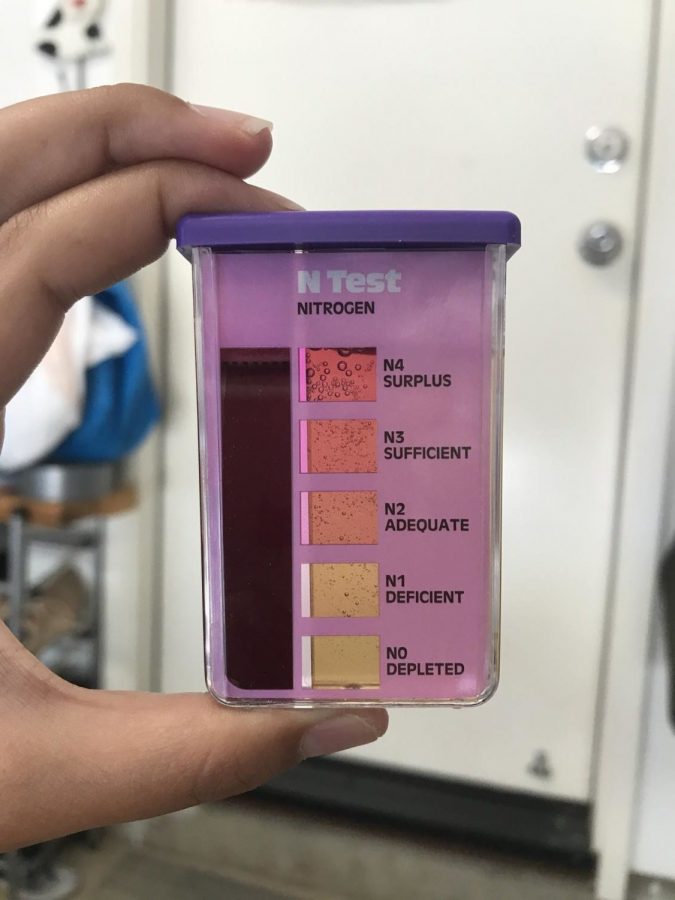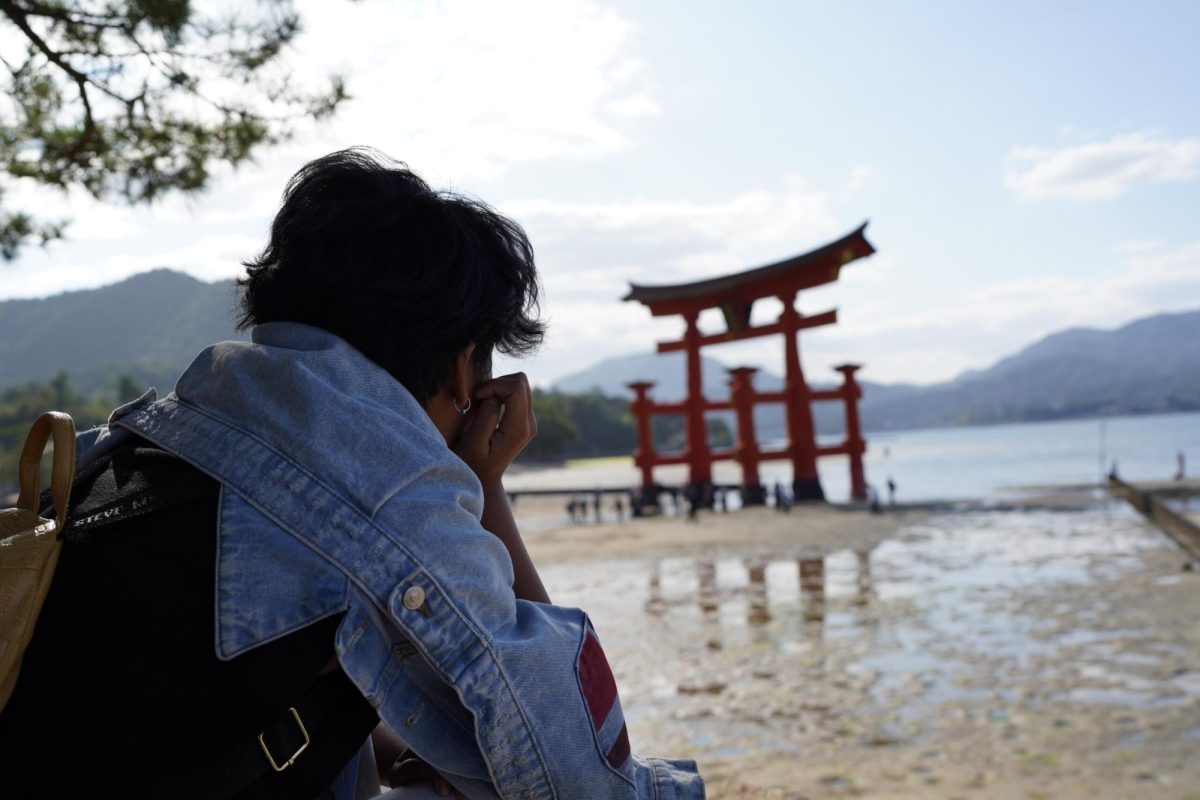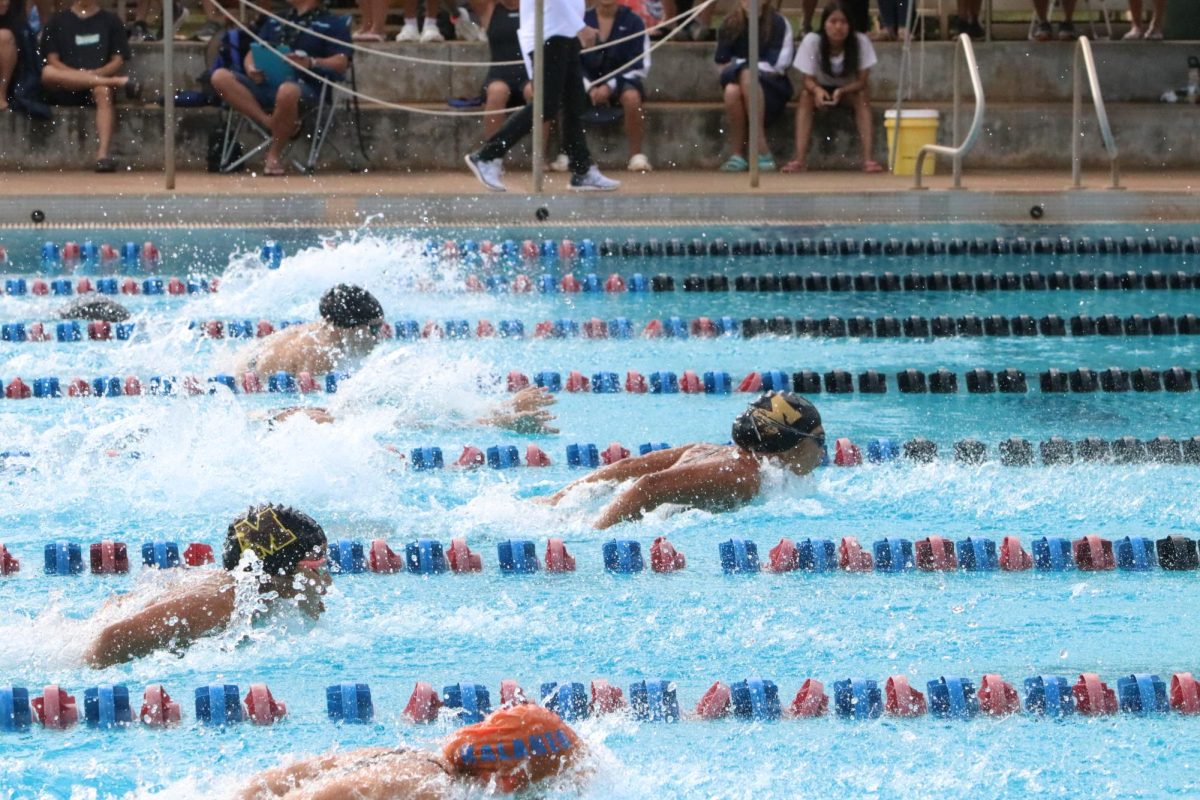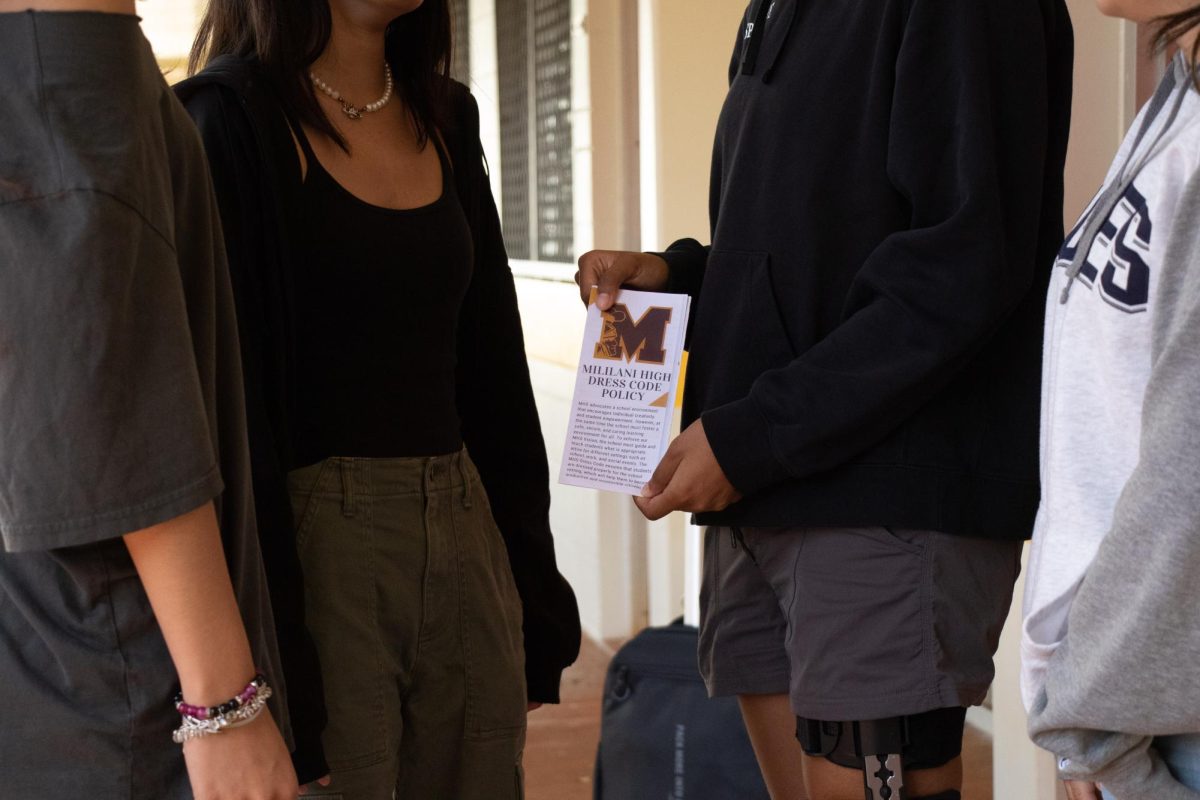MHS Students Place in the 2021 Hawaii State Science and Engineering Fair
Soil tests of Teah Takahata’s experiment on the effect of food wastes on the soil of potato plants. (Photo Courtesy: Teah Takahata)
April 25, 2021
The 2021 Hawai’i District Science and Engineering Fair was held virtually for the first time in 60 years. Although the school science fair for Mililani High School (MHS) was cancelled this year due to COVID-19, students willing to participate were able to create a science project for a chance to compete in the district competition and move onto states. Out of a total of 34 competing projects in the district fair, 17 projects moved onto the state fair. 14 of these projects were from MHS students, including Junior Blaise Swartwood, who received a direct invitation to compete in the International Science and Engineering Fair (ISEF) where finalists from around the world compete for awards, prizes, and scholarships. The 2021 Virtual Hawaii Science and Engineering Fair, hosted by the Hawaii Academy of Science, had their awards ceremony held on April 17.
“I was surprised at first but then very happy. I went into the competition focusing mostly on what I could control and not the results itself, so I was pleasantly surprised with the outcome,” Swartwood said.
For his project on automating the classification of myopathy, which refers to diseases that affect muscle movement, he received 2nd place in the Translational Medicine category, the $600 National Security Agency award, and the $500 Queen’s Health Systems award.
“I chose this project because I have an interest in code, and my grandfather died from a similar disease, which is why I started here,” Swartwood said.
Students who completed a science fair project may have done so as a required project for an AP Biology class this year, to fulfill the STEM Capstone project requirement for a STEM Honors Certificate that students can earn by the time of their graduation, or just out of a willingness to participate. Teachers then chose which projects moved on to the district fair, which was held virtually on Webex, where students would be in a breakout room with judges to present their projects, answer questions, and complete an interview.
Given that MHS had online schooling this year, a struggle for students was having access to resources, materials, technology, and time with advisors to work on their projects. Senior Teah Takahata’s project investigated different types of food wastes and their effect on the soil quality of the soils of potato plants. She won 2nd place in the Plant Sciences category and was chosen for the Top 16 Finalist Projects.
“I think the hardest part was in the very beginning, having to actually complete the experiment because my experiment required a lot of materials and the process of obtaining the results was very tedious, so that was definitely the hardest part,” Takahata said.
In past years, the school science fair allowed for students to have a structured and organized way of completing their projects, such as having specific deadlines, as well as have more accessible feedback before the district fair. This year, alternatives had to be sought. Some of the students of science teacher and Co-coordinator of the MHS Learning Center John Sandvig, who is also the coordinator of the MHS Science Fair, sent emails to him or had after-school meetings during study hall or after to discuss their project.
“And so that was really exciting to see that we had despite the constraints of this year and the difficulties, still being able to, you know, have students create, go through, and present these wonderful projects to the judges and to still impress them,” Sandvig said.
Other MHS students who won awards in the state competition were Junior Jacqueline Kirkpatrick (25 Exemplary Chemistry Project, $100 2021 Regional Stockholm Junior Water Prize, $100 Hawaii Water Environment Association award), Junior Ashlynn Carney (2nd Place Earth & Environmental Sciences category, $500 Alexander & Baldwin award, $100 Hawaii Association of Environmental Professionals award, NOAA Senior Honorable Mention), Junior Alexis Dimaya (2nd Place Biochemistry category), Junior Aaron Ross ($50 Illumination Engineering Society award), Junior Colby Suzuki (2nd Place Energy Sustainable Materials & Design, $50 Illumination Engineering Society award), Senior Makoa DeAlmeida ($200 American Water Works Association), and Senior Kai Roshto (2nd Place Environmental Engineering category, $1000 McInerny Scholarship award, $250 American Water Works Association award, $100 Hawaii Water Environment Association award).
ISEF will be held virtually in May with dates to be announced. For more information, see https://www.hawaiiacademyofscience.org/virtual-science-fair-2021




